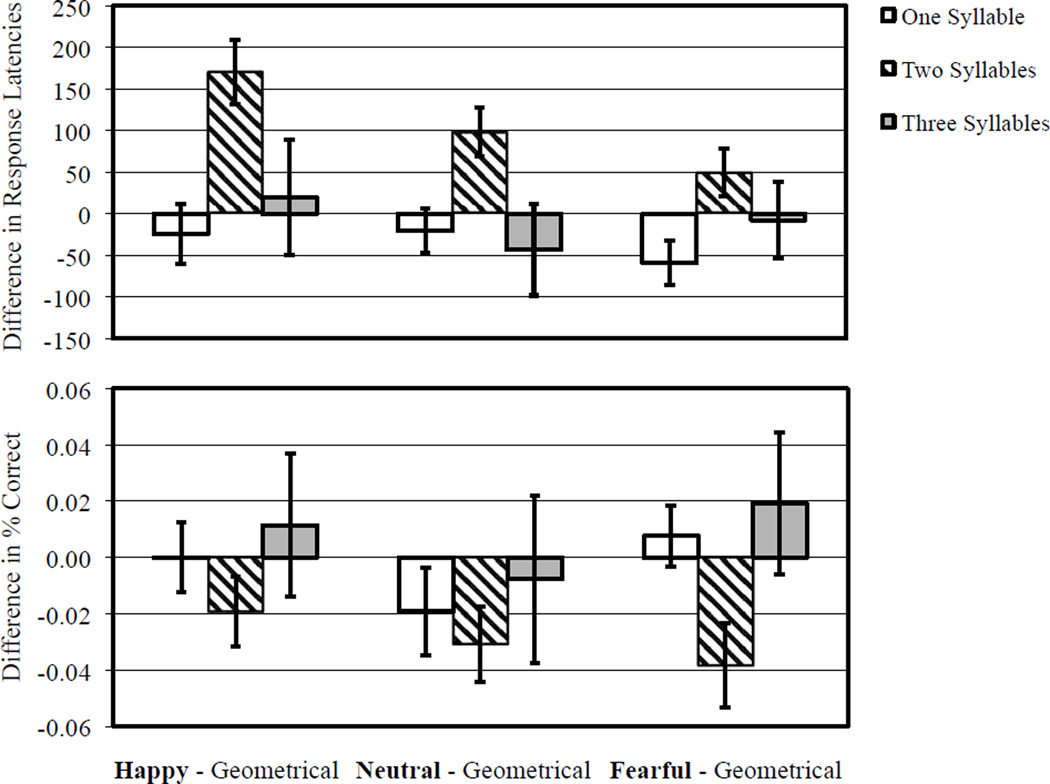Figure 3.
Differences between task performance in the context of facial distraction and task performance in the context of non-facial geometrical distraction for Experiment 2. Zero axis value indicates performance in the context of non-facial geometrical distraction. Positive values in the response latency indicates relative behavioural disruption, whereas negative values in percent correct indicates relative behavioural disruption.

